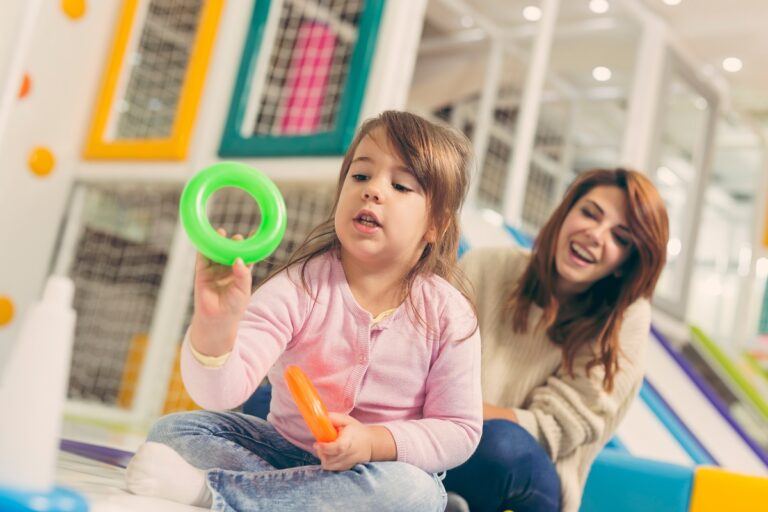Are you worried about the health and fitness for kids? Well, you are not the only one. In today’s world, more and more children are becoming obese and developing various health problems at younger and younger ages. With the advancement of technology, children are also becoming more sedentary, spending less time being active outdoors and more time indoors in front of screens. This blog will provide you with 10 steps to a healthier life for your little ones.
More than ever, maintaining a healthy lifestyle is more difficult now than with sedentary pastimes such as television viewing, video gaming, and Internet surfing. Trying to usurp our children’s time and replace physical activities. The prevalence and low cost of unhealthy processed foods, or what some call ‘junk food,’ can have lasting negative effects on children’s health that later on continue into adulthood.
10 Steps to Maintain Health and Fitness for kids:-
Creating and following a workout routine is vital for kids’ health, but it can be tough to get started. That’s why we have created a list of 10 steps to help you lead your children down the road to health and fitness:

1. Involve the Whole Family
Most of the time, kids can be reluctant to take part in any physical activity, and this scenario especially occurs if they think they are being forced to do so against their will. So one of the best ways to get your kids interested in fitness is to make it a family activity as kids take the lead from parents, so when they watch them involved in such activities, kids will automatically start taking active partitions and interest in it. This will also ensure with the kids’ whole family stays fit and healthy.
2. Use ‘Active’ Transport
One way to help your kids become more active is by walking or riding bikes instead of using the car every time you need to make a short trip. This will send a good message to your kids about the importance of being physically active, and it will also be a great opportunity for you to bond with them while getting some exercise yourself. While it might not be possible for everyone to ditch their car immediately, small changes can still make a big impact. Instead of driving every time, try walking or biking instead- it’s good for your health and the environment. Plus, it sets a great example for your kids!
3. Regular Exercise
Exercising regularly is the key to staying fit and healthy, not just for adults but children too. Try to schedule exercise activities at regular intervals; however, let your kids set the pace; if they feel as though they’re being forced into a fitness regime, then you’ll likely encounter resistance. Pushing your kids to their absolute limits may have a reverse effect, ultimately causing them to resist you for making them exercise. Also, it is crucial that your children are happy with what they’re doing. In the long run, this will prevent any issues from arising.
4. Keep Fit Through Daily Chores
To be honest–Unlike adults, even kids don’t like doing daily chores. But they’re still a valuable addition to family life because they help teach children responsibilities while making them feel like they’re contributing to the household. If your child isn’t into sports or outdoor activities, another way to get some exercise is by turning their chore list into a physical activity list. For example, having them wash the car, mow the lawn or vacuum the house are all great ways to burn calories and get moving without them realizing it!
5. Keep it New and Fun!
When we were kids, many of us had to take part in sports lessons at school that we didn’t enjoy. We would often be outdoors in the cold without proper clothes, and these negative experiences stuck with us. It’s important to avoid this happening to your child, so they don’t get turned off from fitness altogether. The key word here is ‘fun.’ If you can make sure that any activity you do together is enjoyable for your child, then it won’t feel like a chore and will become a normal part of their everyday life.
Children’s attention spans are notoriously short, so an activity they enjoyed last week may quickly lose its luster the next. Unless you’re deadset on making your kid the next sporting sensation, it doesn’t matter what They do to stay active as long as they enjoy it. Trying new sports and activities is a great way of discovery for kids, so It’s worth experimenting with different things. How about crazy golf, trampolining, horseback riding, or kayaking? There are plenty of options to choose from!
6. Turn the TV Off
It’s easy to let your kids vegetate in front of the TV when you have a lot going on, but years ago, there were only a few hours of children’s programming available. Now, with cable and satellite channels, there are entire stations devoted to kid-friendly content that they can watch all day long. There’s nothing inherently wrong with watching TV – it can be enjoyable and educational – but it is a very inactive activity.
Keep in mind that your teenager’s attention spans are short. Try to limit screen time as much as possible, and turn off the TV after a few hours. There may be debates at first, but once your youngster gets into a routine, he or she will seek out other things to do while the TV is switched off – ideally, more active options!
Computer games have long been considered a pastime for the inactive, but recently that notion has shifted with active computer games like Dance games and other Outdoor VR Games. If possible, guide your child towards these types of fitness-oriented games; they’ll have fun while getting healthy.
7. Try the Scouts & Guides
If your child isn’t particularly outdoorsy, that’s okay! There are plenty of other ways to get them active. Getting involved with the Scouts, Guides, or another organization can be a great way of ensuring an active lifestyle for your kid. For example, in the UK, the Scouts are open to people from ages 6-25, and they do all sorts of activities like rock climbing and sailing as well as creative and educational pastimes.
8. Nutrition & Healthy Eating
Exercise must be combined with healthy eating and good nutrition to maintain a healthy lifestyle. Good nutrition does not always have to be about bland meals that your child doesn’t like; instead, try to offer a wide selection of cuisines and styles to your child’s diet. You could never guess what they might enjoy eating.
The key to eating healthily is moderation. Junk food such as chips, candy, cookies, and cake should be kept to a minimum or only eaten on special occasions. This way, your child will learn not to expect these kinds of foods all the time and will appreciate them more when they do have them. Unhealthy foods typically don’t offer much in terms of nutrition and can contain harmful additives that some experts agree can negatively affect one’s health long-term.
9. Team Games
Research indicates that team sports are linked with increased levels of self-esteem, social skills, and mental well-being in children. Playing on a team can also teach your child how to work cooperatively with others and how to handle winning and losing gracefully.
If your kid is shy or not very confident, team sports may help them blossom. Playing sports can also be a great way for your child to make new friends.
10. Set a Good Example
As a parent, you are your child’s biggest role model. If you live a sedentary lifestyle and eat unhealthy foods, your child is likely to follow suit. On the other hand, if you lead an active life and eat healthily, your child will be more likely to do the same. Try to set a good example for your child in all aspects of life, and they will be more likely to grow up to be happy, healthy adults.
These are just a few steps to get you started on the path to a healthier lifestyle for your kids. Implementing even a few of these tips can make a big difference in your child’s health. Just remember to be patient, take things one step at a time, and have fun!
The Final Word:
Encouraging your child to lead a healthy lifestyle is important, but don’t forget to let them enjoy their childhood! It’s a time that they’ll never get back, so let them savor it. Try not to put too much pressure on them – instead, let them know that you’re there for them and that you support their decisions. If you live a healthy lifestyle yourself, your kids are more likely to follow in your footsteps. So get out there and start living healthy! Your kids will thank you for it later.
Hopefully, this article has given you some ideas on how to get your kids started on the path to a healthy lifestyle. The key to maintaining a healthy lifestyle into adulthood is making sure it was fun for them as kids! If they start seeing exercise and healthy eating habits as a chore, then they are much less likely to develop these as lifelong habits. There’s no better time to start than now, so what are you waiting for? Get out there and get active!










